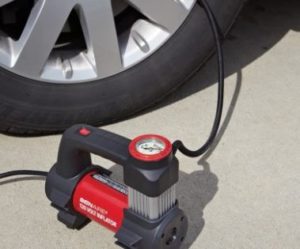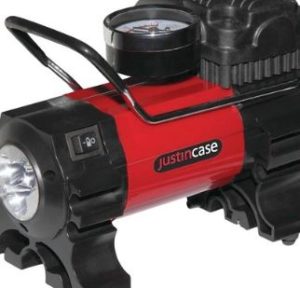Author: Deborah Vaughn
Factors to Consider When Buying a Used Van
Unlike purchasing a brand new van from the factory with an extended warranty, a used van will have traveled thousands of miles for many years. Its service and usage history can be a mystery, and there is a concern that a chosen van is not as good as it appears.
Bodywork
 When checking the bodywork, you need to look for rust. It is quite obvious on the sills, wings, and below bumpers. You can also find it under wheel arches, door frame, and corners of the windscreen. Press the rust gently and if it produces cracking sounds, that will be a sign of corrosion.
When checking the bodywork, you need to look for rust. It is quite obvious on the sills, wings, and below bumpers. You can also find it under wheel arches, door frame, and corners of the windscreen. Press the rust gently and if it produces cracking sounds, that will be a sign of corrosion.
Suspension
When you push down every corner of the van, this will give you an indication of the condition of the shock absorbers. If the van bounces and returns to normal position, then the shock absorbers are fine. A test drive can also help know the condition of shock absorbers.
Lights
Lights can give you a hint about the electrical health of the car. Avoid buying a van if its brake lights, fog lights, indicators, headlights, and interior are not working appropriately.
Air Conditioning
Ensure that the air conditioning system is working properly. The fan ought to operate on all speeds, and air-conditioning compressor should be quiet. After checking the air-conditioning, perform other checks on the heater of the van.
Brakes
When you take used van out on the road, look for a safe, straight piece of road which you can test out braking system. The good thing about a brake test is that it helps determine whether the brakes have a good feel. When testing, listen to the grinding or squealing noises.
Tires
 As you know, tires are the only point of contact between the road and the van. This explains why it is necessary to check the sidewalls and treads of each tire, including the spare. The sidewalls of the tires ought to be free from bulges and damage. Uneven wear suggests tracking, steering, or even suspension issues.
As you know, tires are the only point of contact between the road and the van. This explains why it is necessary to check the sidewalls and treads of each tire, including the spare. The sidewalls of the tires ought to be free from bulges and damage. Uneven wear suggests tracking, steering, or even suspension issues.
Engine
The bonnet of the van ought to be cold before the engine is started. If it is warm, that is a sign that the engine is also warm. When checking the engine, check for signs of smoke and listen out for unusual noises.…
Guide to Choosing the Best AC Tire Inflator
A tire inflator is an investment because it saves your car fuel. Well-inflated tires ensure that the car runs in the most efficient manner and reduces drag. Your engine has less work to do, and the car saves fuel. 80% of car owners are neglecting this fact, and they are losing more than one billion dollars annually in lost fuel savings. Before going out to get a tire inflator, you might want to keep reading this guide to choosing the best ac tire inflator. You want the best return for the money you spend, and this will come in terms of a dependable, speedy, and high-quality product.
Portability
 The tire inflator would be useful if it cannot fit in the trunk of your car. Sometimes you will need to use it while you are outside any modern amenities. You want something that is easy to handle even when you are alone in the car. A portable feature of the tire inflator is there a priority feature worth considering. The weight should be low enough to allow you to lift the inflator and set it up. In most cases, the inflator engine goes near the tire while its power wires connect to the car battery.
The tire inflator would be useful if it cannot fit in the trunk of your car. Sometimes you will need to use it while you are outside any modern amenities. You want something that is easy to handle even when you are alone in the car. A portable feature of the tire inflator is there a priority feature worth considering. The weight should be low enough to allow you to lift the inflator and set it up. In most cases, the inflator engine goes near the tire while its power wires connect to the car battery.
Connecting Wires and Battery Clamps
You do not want an inflator with clamps that are going to snap out of position and cause electric shocks. Modern cars are very sensitive to power failures or spikes. Therefore, the clamps and the wires should be strong enough to withstand repeated use and deliver a constant flow of power. The clamps should not rust easily and must be easy to handle when clamping them to the car battery. For a portable power source use, you may consider the reliability of the power source and options of connecting to the car battery as backup.
Pressure Rating
A tire inflator with a low-pressure rating will take long to inflate the tire with compressed air. You may want to go for one with the highest pressure rating after you confirm all other conditions to meet your requirements. Unfortunately, high pressure-rated AC tire inflators are pricey. The good news is that you will still be relying on your car battery and you can keep the car running to ensure that there is enough power to support the tire inflator.
The Pressure Meter
 Modern meters come with led screens that allow you to see at night because they have backlit illumination options. If you are using an analog pressure indicator, you may miss the accuracy of the inflation mark, and that is a disadvantage. Try to go for the tire inflators with backlit LED screen. You would also need an LED flashlight in case you have to inflate your tire at night or in the basement parking where there is dim lighting.
Modern meters come with led screens that allow you to see at night because they have backlit illumination options. If you are using an analog pressure indicator, you may miss the accuracy of the inflation mark, and that is a disadvantage. Try to go for the tire inflators with backlit LED screen. You would also need an LED flashlight in case you have to inflate your tire at night or in the basement parking where there is dim lighting.
Charging Options
The chargeable AC tire inflators may come with a wall socket or a car cigarette port for 12V charging. You would want to pick one that comes with both. If it also charges and uses direct power for operations, then that would be best. While you look at the charging options also check whether the battery is removable as that makes replacement easy.…




